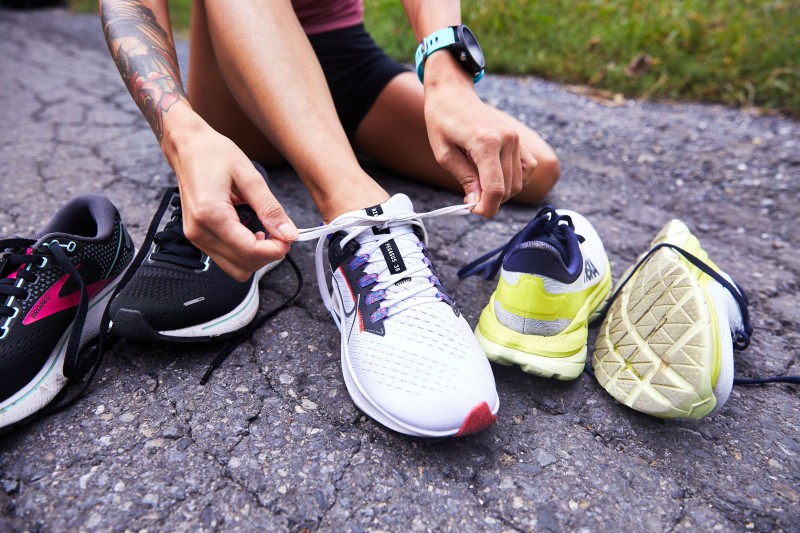
Choosing the perfect workout shoes isn't just about style; it's about optimizing your performance, ensuring comfort, and minimizing the risk of injuries. In this comprehensive guide, we'll delve into the intricacies of selecting the ideal footwear for your fitness endeavors, covering everything from understanding your workout needs to the anatomy of the shoe and essential tips for maintaining them.
The first step in finding the right workout shoes is to identify the primary type of exercise you engage in regularly. Different activities demand different types of footwear, and understanding this distinction is crucial for making an informed choice.
Whether you're a dedicated runner, an avid weightlifter, or someone who enjoys a mix of activities like cross-training, acknowledging the specific demands of your workout routine is essential. Running shoes, for example, are designed with features that cater to the repetitive impact of running, offering cushioning and support for your feet and joints.
Each person's feet are unique, and understanding your foot type is fundamental in selecting the right shoes. The three primary arch types—high, normal, and flat—dictate the level of support your feet require. For high arches, shoes with extra cushioning and flexibility are beneficial, while flat feet benefit from shoes with added arch support.
The sole is the foundation of any shoe and plays a crucial role in determining its suitability for various activities. Consider the type of sole that aligns with your workout requirements.
Running Shoes: These often feature a well-cushioned sole to absorb the impact of each stride, providing protection to your joints during high-impact activities.
Weightlifting Shoes: In contrast, weightlifting shoes typically have a flatter sole, offering stability and a solid base for better posture during lifts.
Extended periods of physical activity can lead to sweaty and overheated feet. To combat this, prioritize shoes with breathable materials. Mesh panels and moisture-wicking fabrics promote airflow, keeping your feet cool and comfortable during workouts.
The toe box, the front part of the shoe that houses the toes, plays a crucial role in comfort. Ensure that the toe box provides ample space for natural movement. A cramped toe box can lead to discomfort, blisters, and even long-term foot issues.
A secure heel is vital for activities that involve repetitive impact, such as running or jumping. Proper heel support ensures stability, reducing the risk of injuries. Look for shoes with a well-structured heel counter to keep your foot securely in place.
Shoe sizes can vary between brands, emphasizing the importance of trying on shoes before purchasing. Consider potential foot swelling during exercise, and opt for a size that provides a snug yet comfortable fit.
Running shoes come in various styles, each catering to different aspects of running. Consider factors such as cushioning, stability, and motion control based on your running style and preferences.
For those engaging in a mix of activities, cross-training shoes offer versatility. Look for shoes that provide adequate support for lateral movements, ensuring stability during activities like aerobics or HIIT workouts.
Weightlifting requires a different set of features. Look for shoes with a flat sole to maximize contact with the ground, providing a stable base for heavy lifts. An elevated heel can also enhance ankle mobility.
Regular wear and tear impact the performance of your workout shoes. Aim to replace them every 300-500 miles for running shoes or when you notice signs of deterioration in the midsole or outsole.
The midsole is a critical component of any athletic shoe, providing cushioning and support. Regularly inspect it for signs of compression or wear, as a compromised midsole can lead to discomfort and reduced effectiveness.
Feet tend to swell throughout the day, so it's advisable to shop for workout shoes in the evening. This ensures a more accurate fit, accommodating any potential swelling during exercise.
The socks you wear during your workouts can impact the fit of your shoes. Bring the socks you intend to wear during exercises to ensure a proper fit and prevent discomfort.
Having multiple pairs of workout shoes and rotating them can extend their lifespan. This not only ensures the shoes maintain their effectiveness but also allows each pair to air out between uses.
Regularly cleaning your workout shoes is essential for maintaining hygiene. Remove dirt and sweat to prevent bacterial growth, unwanted odors, and potential skin issues.
While stylish workout shoes can be appealing, functionality should always be the primary consideration. Prioritize features that align with your workout needs over aesthetics.
Discomfort is your body's way of signaling that something is wrong. If a shoe doesn't feel right, don't ignore it. Addressing discomfort promptly can prevent potential injuries and long-term issues. In conclusion, choosing the right workout shoes is a nuanced process that involves a deep understanding of your workout needs, consideration of shoe anatomy, ensuring the right fit, and adopting proper maintenance practices. By following these guidelines, you'll not only enhance your performance but also embark on a more comfortable and injury-resistant fitness journey.
This vegetable is more powerful than milk, butter and cheese! bones will become stronger
Nose bleeding is a sign of high blood pressure, know about it
Do you also eat tea and parantha for breakfast? So before eating, know what it does in the body?